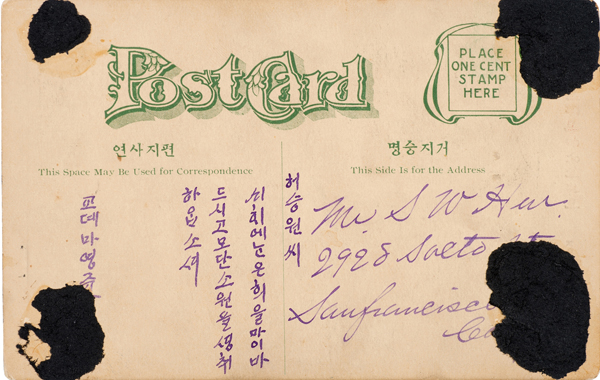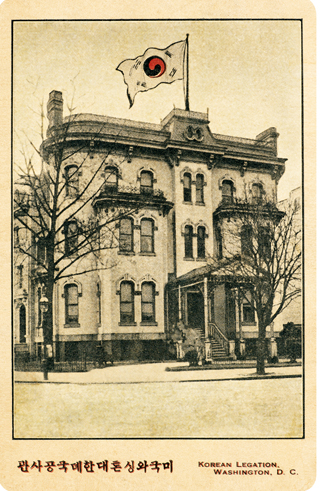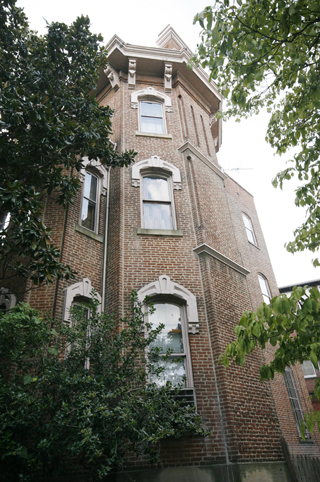Postcard leads to ‘house of miracle’

The Overseas Korean Cultural Heritage Foundation unveiled a postcard featuring the Korean legation in Washington that contained a message exchanged between independence fighters in the U.S. Provided by the foundation
This may sound like any other New Year’s greetings. However, it isn’t.
This is from a postcard exchanged between Korean independence fighters either during the Japanese colonization of Korea (1910-1945) or the years leading up to that period. The postcard features the Korean legation building in Washington, D.C., that the Korean government bought from the owner in August 2012 to much attention from Korean residents in the U.S. as well as Korean media.
“Postcards featuring the legation had been found before, but this marks the first time that we found a postcard with independence fighters’ names, their correspondence and an address,” said Kang Im-sam, one of the spokesmen of the Overseas Korean Cultural Heritage Foundation.
In the archives of the Independence Hall of Korea, a museum and memorial hall for Korea’s independence movement in Cheonan, South Chungcheong, experts found postcards featuring the legation. They were donated by the descendants of Ahn Chang-ho and Seo Jae-pil, leaders of Korea’s independence movement against Japan. However, they were empty, without any writing on them.

“The postcard is written by Ma Yeong-jun and to Heo Seung-won in San Francisco,” the foundation said in a press release. “Through research, we were able to find out that Heo’s address in San Francisco was a match to the headquarters of the Korean National Association, which was formed in 1909 by Korea’s independence fighters based in the U.S., and that both Ma and Heo were members of the association.”
What is conspicuously missing in the postcard, though, is the date. Kim Do-hyeong, a senior researcher, said that given the context “it appears to have been written some time around 1910.” He said that many postcards were exchanged between Korea’s independence fighters, but it is notable in that the latest one features the Korean legation in Washington - a symbol of Korea’s desperate attempts to make it clear to the world that it was a viable, independent state that refused to be ruled by its neighbors, such as China or Japan.

The Korean government bought the legation building last year. It is set to open to the public in 2015. [JoongAng Ilbo]
King Gojong (1852-1919), the last king of the Joseon Dynasty (1392-1910) and first Emperor of the Korean Empire (1897-1910), bought the property for $25,000 in 1891. Two months before Japan’s annexation of Korea in 1910, Japan purchased the building for $5.
It wasn’t until the 1980s that a few Korean scholars learned of the existence of the legation through documents in Washington. Since the early 2000s, the Korean community in Washington and other opinion leaders attempted to buy back the building.
Although the owner of the building changed many times, many parts of the house retained its original form - thus the nickname “house of miracle.” “Compared with the photos from the past, the space and structure is almost perfectly preserved,” said Kim Jong-hun, an architecture professor at Pai Chai University.
In July, the Overseas Korean Cultural Heritage Foundation announced that the building has been included in the 2.4-kilometer (1.5-mile) history tour course operated by the nonprofit Cultural Tourism DC.
However, people will have to wait to explore the inside of the building. The foundation is in the process of debating how to utilize the building, with an aim to open it to the public in 2015.
An exhibition or memorial hall is a possibility mentioned by foundation officials.
BY KIM HYUNG-EUN [hkim@joongang.co.kr]










with the Korea JoongAng Daily
To write comments, please log in to one of the accounts.
Standards Board Policy (0/250자)